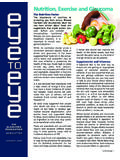Transcription of An Introduction to the Shiba Inu (part 1) General ...
1 An Introduction to the Shiba Inu (part 1). General Information on the Shiba Inu Shiba Brochure written by Jacey Holden Introduction If you are already this far, you have probably caught your first glimpse of a Shiba . It may have been at a dog show, walking in a park, or just a picture in a book. Cute, huh? The Shiba is probably one of the most universally appealing of all breeds. It has the look toy manufacturers try to capture in their favorite stuffed animal, the teddy bear. But the Shiba is not a toy. It is a very lively little dog with a unique set of characteristics. Each one is an individual with his own personality, but there are some traits that are considered typical of the breed.
2 Dog ownership is a long term commitment; not something that can be stuffed in the closet once the novelty wears off. A dog's love is for keeps. A Brief History of the Shiba Inu Originally, Shibas were bred to flush birds and small game and were occasionally used to hunt wild boar. Now they are primarily kept as pets, both in Japan and the United States. There are more Shibas in Japan than any other breed. Around 7000 BC the ancestors of today's Shiba may have accompanied the earliest immigrants to Japan. Archaeological excavations of the shell-mounds left by the Jomonjin, or Rope-Pattern People (a name derived from the pattern found on their earthenware), show that they had small dogs in the 14 1/2 to 19 1/2 inch range.
3 In the third century BC, a new group of immigrants brought their dogs to Japan. These dogs then interbred with the descendants of the Jomonjin dogs, and Red Shiba produced canines known to have pointed, erect ears and curly or sickle tails. In the 7th century AD, the Yamato Court established a dogkeeper's office that helped maintain the Japanese native breeds as an integral part of Japanese culture. Although the country was closed to foreigners from the 17th through 18th centuries, some European dogs and a breed known as the Chinese Chin were imported and crossed with native dogs living in the more populated areas. Dogs in the countryside, however, remained relatively pure.
4 Originally there were three main varieties of Shiba ; each named for its region of origin. Although similar, the Shibas from each area contributed to differences in breed type seen today. From the original Japanese native dogs, six distinct "breeds," in three different sizes developed. They are: *Large Size - The Akita *Medium Size - The Kishu, Hokkaido, Shikoku, & Kai *Small Size - The Shiba The small size dog has been called the Shiba since ancient times, with several theories surrounding the development of that name. One popular explanation is that the word Shiba means "brushwood," and the dogs were named for the brushwood bushes where they hunted.
5 Another theory is that the fiery red color of the Shiba is the same as the autumn color of the brushwood leaves. A third conjecture is related to an obsolete meaning of the word Shiba referring to its small size. These explanations are often combined and the Shiba is referred to as the "little brushwood dog.". World War II nearly spelled disaster for the Shiba , and most of the dogs that did not perish in bombing raids succumbed to distemper during the post-war years. While the Mino and Sanin Shibas became practically extinct, more of the Shinshu Shibas survived. After the war, Shibas were brought from the remote countryside, and breeding programs were established.
6 The remnants of the various bloodlines were combined to produce the breed as it is known today. Physical Characteristics The Shiba is a very proportionate dog with a height to length ratio of 10 to 11. Males run from 14 1/2 to 16 1/2 inches tall, with females ranging from 13 1/2 to 15 1/2 inches. Heights over or under the limits are a disqualification in the show ring. The weight varies according to height up to about 25 pounds. It is a medium boned, moderately compact and well-muscled dog with a generally Spitz-like appearance. Because of its hunting heritage, it is quick, agile and able to turn on a yen. It has a dense double coat similar to that of a husky.
7 Although all colors are acceptable in the Shiba standard, red, red sesame Sesame Shiba (sable) and black and tan are preferred. White and cream shadings (urajiro) are present on the legs, belly, chest and part of the face and tail. Read the breed standard at Temperament With a black button nose, little pricked ears and a curly tail, the Shiba enters the world knowing he is a superior being. Whether with intrepid boldness, squinty-eyed cuteness or calm dignity, he is king. The Japanese have three words to describe the Shiba temperament. The first is "kan-i" which is bravery and boldness combined with composure and mental strength. The opposite side of "kan-i" is "ryosei" which means good nature with a gentle disposition.
8 One cannot exist without the other. The charming side of the Shiba is "Soboku" which is artlessness with a refined and open spirit. They combine to make a personality that Shiba owners can only describe as "irresistible.". If a Shiba could only utter one word, it would probably be "mine." It is "mine". food, "mine" water, "mine" toys, "mine" sofa, "mine" crate, "mine" car, "mine" owner, and "mine" world. Sharing is a concept he feels others should practice. Some Shibas may carry "mine" a bit too far and become aggressive in their resource guarding, particularly in the presence of other dogs. It is wise to remove favored toys and food-based treats in the presence of other dogs and small children so the dog doesn't become overly possessive.
9 If the bait is dangled when a potential Shiba owner sees adults at a dog show or pictures in a magazine, the hook is set when he encounters his first puppy. They are exemplary examples of canine cuteness, fiery little fuzzballs-from-hell, no words can describe the appeal of the infant Shiba . A litter of Shibas is a Dakin . Convention and a school of piranha; strutting, posturing little windup toys. The adult Shiba is far from a toy. "Macho stud muffin" has been used to describe the male Shiba . The body may look "muffin," but the mind is all "macho stud." The Shiba takes the "spirited boldness part of his temperament quite seriously. Early socialization and neutering are mandatory for the young puppy.
10 Dog aggression, especially in the un-neutered male, is a breed characteristic. This fiery aspect of the Shiba nature cannot be taken lightly. Most Shiba owners learn to deal with the difficult aspects of the dog's temperament to enjoy the delightful ones. With "Soboku" the Shiba sets his hook into the heart. This is "artlessness" with squinty eyes, airplaned ears, Soboku and a vibrating tail. It is "charm" standing in your lap, washing your ears, and "dignity" plus "refinement" born of the knowledge of superiority. Health Considerations As a breed, Shibas can rightfully be described as sturdy, healthy little dogs, able to withstand the rigors of outdoor life as well as enjoying the comfort of indoor dwelling.








